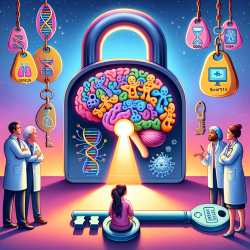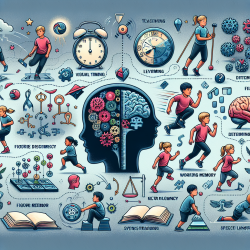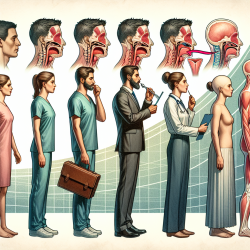Introduction
Understanding the complexities of autism and related disorders is crucial for practitioners aiming to provide effective interventions. Recent research has shed light on the relationship between UBE3A and SNORD116 gene expressions and autism features in chromosome 15 imprinting disorders, including Prader-Willi Syndrome (PWS), Angelman Syndrome (AS), and Dup15q syndrome. This blog post will delve into the findings of the study titled "Relationships between UBE3A and SNORD116 expression and features of autism in chromosome 15 imprinting disorders" and explore how practitioners can leverage these insights to enhance their practice.
Key Findings
The study examined the mRNA levels of UBE3A and SNORD116 in individuals with chromosome 15 imprinting disorders. It was found that:
- The Dup15q group exhibited significantly increased UBE3A mRNA levels compared to controls.
- Both AS and Dup15q groups had elevated SNORD116 mRNA levels compared to controls.
- Increased UBE3A and SNORD116 mRNA levels correlated with developmental functioning scores in the deletion AS group and autism features in the non-deletion PWS group.
Implications for Practitioners
These findings suggest that gene expression in peripheral tissues could serve as a biomarker for autism severity in these disorders. Practitioners can consider the following strategies:
- Integrate Genetic Insights: Utilize genetic testing to assess UBE3A and SNORD116 expression levels as part of a comprehensive evaluation process.
- Personalize Interventions: Tailor therapeutic approaches based on the genetic profile of the individual, focusing on enhancing developmental functioning and addressing specific autism features.
- Collaborate with Researchers: Engage in collaborative research efforts to further explore the role of these genes in autism and develop targeted interventions.
Encouraging Further Research
While the study provides valuable insights, it also highlights the need for further research to fully understand the mechanisms underlying these genetic interactions. Practitioners are encouraged to stay informed about ongoing research and consider participating in studies that aim to unravel the complexities of autism and related disorders.
Conclusion
The relationship between UBE3A and SNORD116 expression and autism features offers a promising avenue for improving the diagnosis and treatment of chromosome 15 imprinting disorders. By integrating these genetic insights into practice, practitioners can enhance their ability to provide personalized and effective interventions for individuals with autism.
To read the original research paper, please follow this link: Relationships between UBE3A and SNORD116 expression and features of autism in chromosome 15 imprinting disorders.










